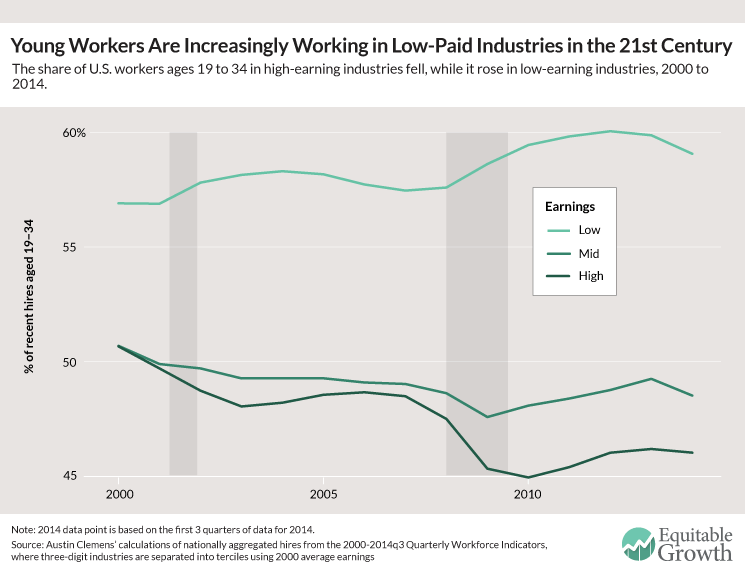The very sharp and energetic Peter Passell, who runs the Milken Institute Review these days, commissioned me to write a reader’s guide to the secular stagnation debate. I set it up as a four-corner cage match–Bernanke, Rogoff, Krugman, and Summers–and I am proud of it. (But I have to offer apologies to those–Koo, Blanchard, Feldstein come most immediately to mind, but there are others–who have their own serious positions that are not completely and satisfactorily understood as linear combinations of the four I chose to be my basis vectors.) It is out:
(2015): The Scary Debate Over Secular Stagnation, Milken Institute Review 2015:IV (October) pp. 34-51:
Bernanke… says we have entered an age of a “global savings glut.”… Rogoff… points to the emergence of global “debt supercycles.”… Krugman warns of the return of “Depression economics.” And… Summers calls for broad structural shifts in government policy to deal with “secular stagnation.” All… are expecting a future that will be very different than the second half of the 20th century, or even the so-far, not-so-good third millennium. But they… [differ on] optimism or pessimism… [and on whether] cautious repairs or an abrupt break with policy as usual [are needed. This] is, I believe, the most important policy-relevant debate in economics since John Maynard Keynes’s debate with himself… which transformed him from a monetarist to the apostle of active fiscal policy.
I think Summers is largely right, but then, I would, since I have been losing arguments with him since I was 20. What’s needed here, though, is not a referee’s decision, but a guide to the fight…
Briefly:
- Bernanke sees anomalies in portfolio decisions by emerging-market central banks and plutocrats that have generated a global savings glut in the relatively short-run.
- Rogoff sees overleverage as having created a medium-run period of stagnation that requires active debt-liquidation policies to shorten it.
- Krugman sees the end of the era of moderate inflation as bringing about a return to “Keynesian” economic structures that require activist fiscal policy.
- Summers sees deeper problems that call for more in the way of government’s acting as investment-spender, risk-bearer, safe asset-supplier, and bubble-preventer of last resort, and thus extend its proper role beyond that of Keynesian demand-management policies toward what Keynes called a “comprehensive socialization of investment”.
All are serious and live possibilities…

